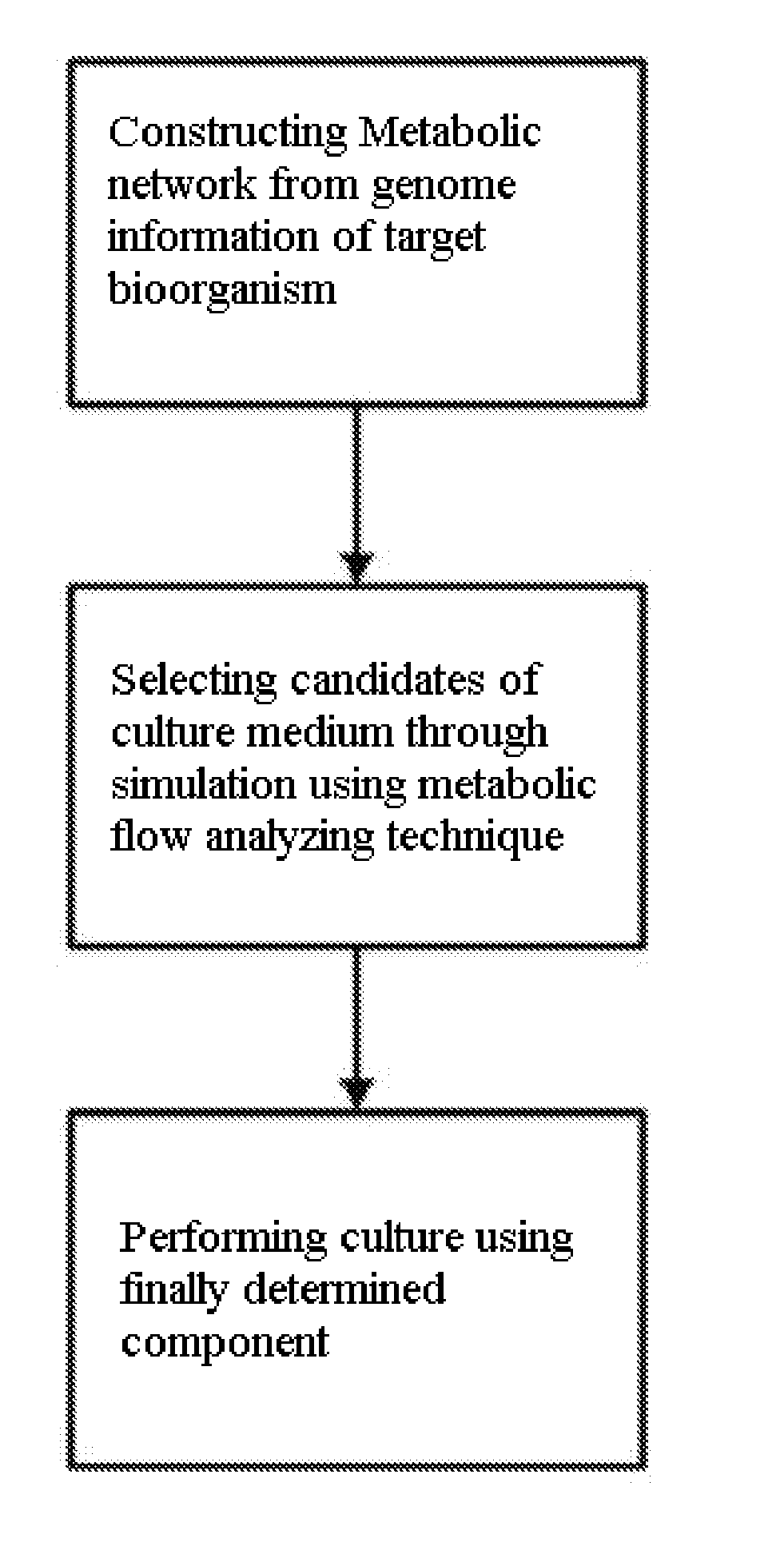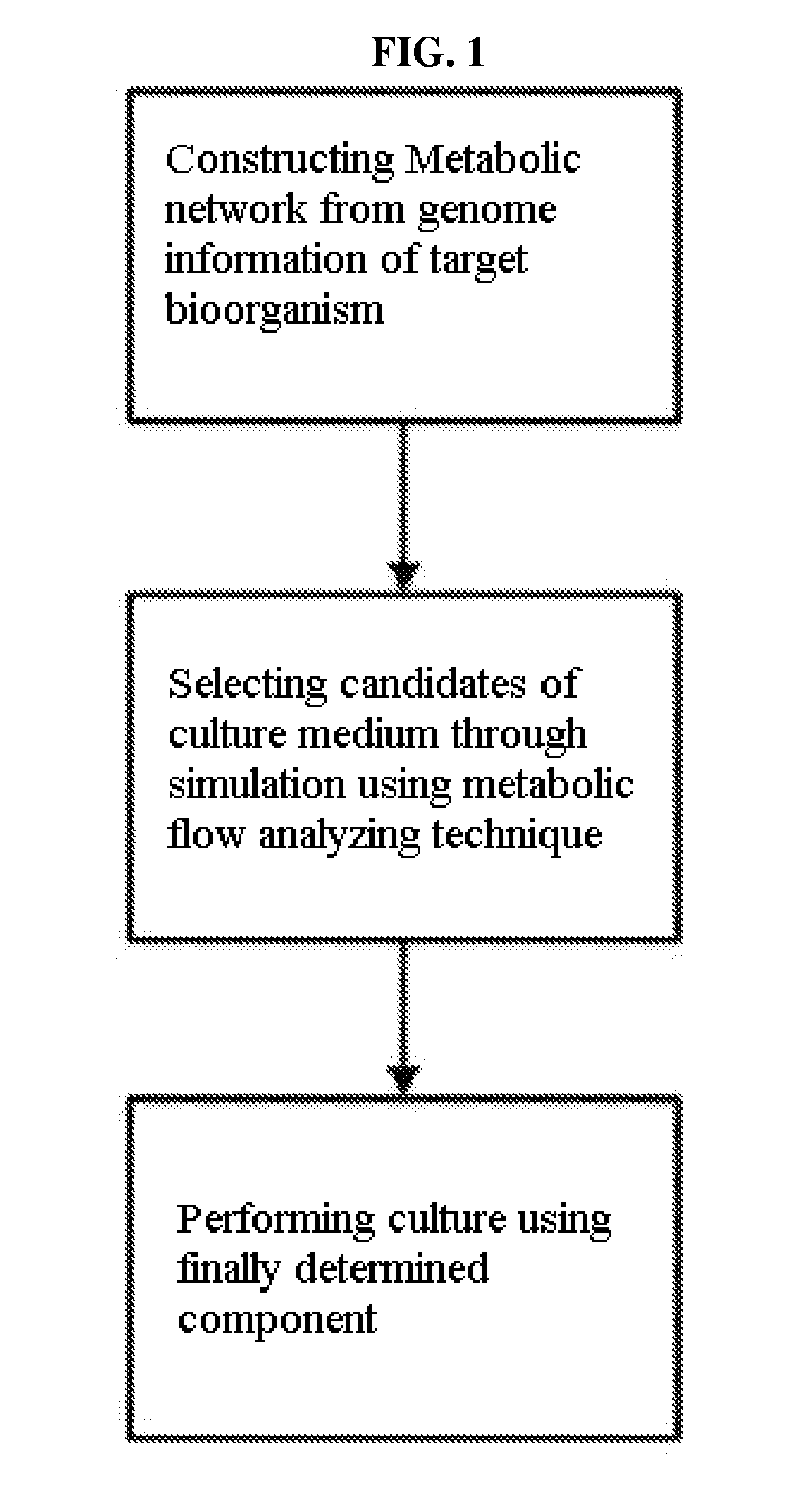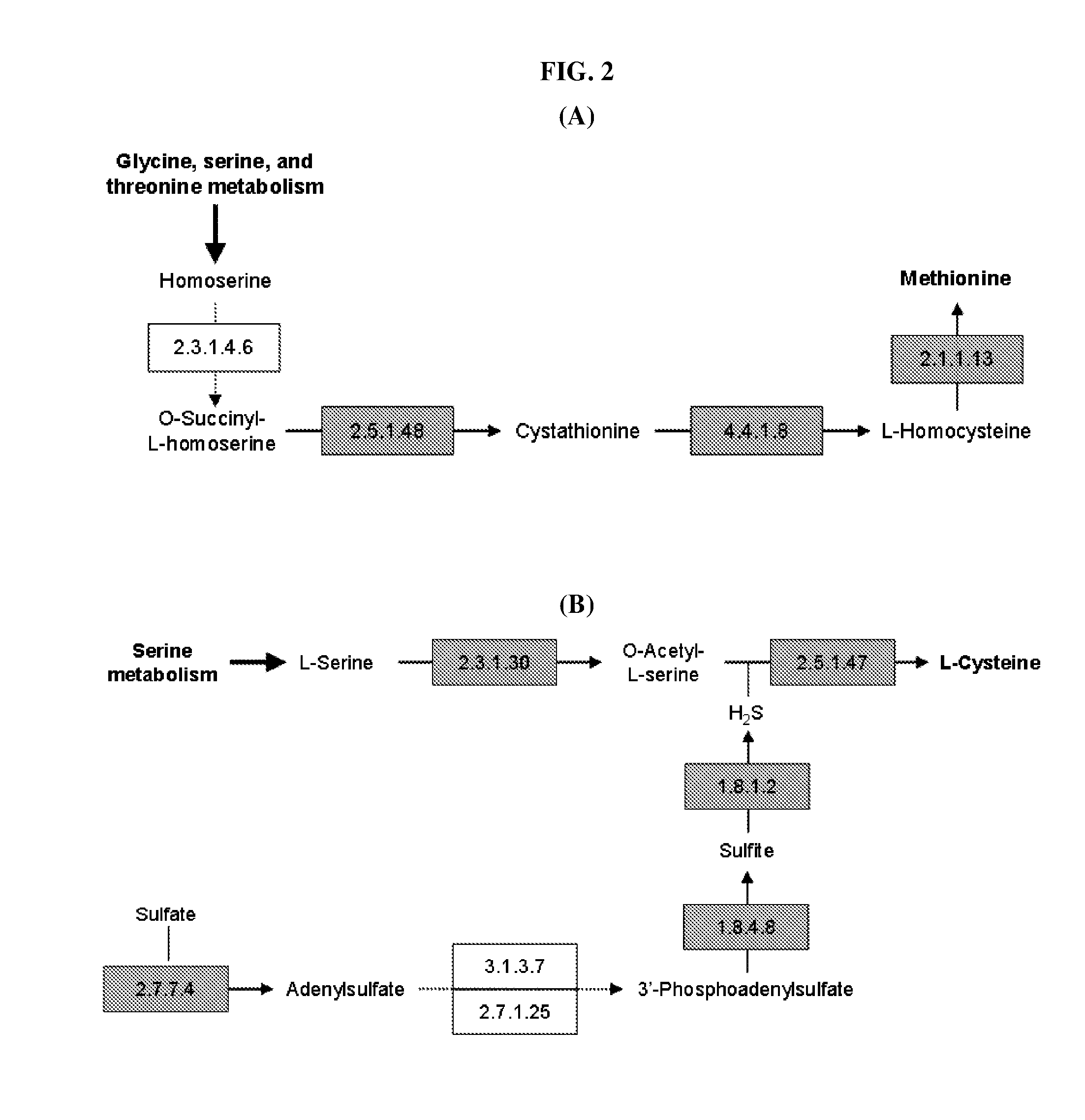Method for developing culture medium using genome information and in silico analysis
a technology of genome information and culture medium, applied in the field of culture medium development using genome information and in silico analysis, can solve the problems of increasing the cost of separation and purification, reducing the productivity of patients, and reducing the risk of death
- Summary
- Abstract
- Description
- Claims
- Application Information
AI Technical Summary
Benefits of technology
Problems solved by technology
Method used
Image
Examples
example 1
Construction of Mannheimia Metabolic Network and In Silico Analysis
(1) Construction of Metabolic Network
[0049] In the present invention, a novel metabolic network is constructed to develop a synthetic medium of Mannheimia. Specifically, a relevant metabolic pathway is constructed after gene regions are assumed based on the whole genome information of Mannheimia and the function of each gene is determined, and cell metabolism is probed in real-time therefrom.
(2) Metabolic Flux Analysis Using In Silico Simulation
[0050] To predict components of a synthetic medium for growth of Mannheimia and the production of succinic acid, metabolic flux analysis method was used based on the constructed whole metabolic network of Mannheimia.
[0051] If all metabolites, metabolic pathways and the stoichiometric matrix in the pathways (SijT, metabolite i in the j reaction) are known, the metabolic flux vector (vj, flux of j pathway) can be calculated, in which a change in the metabolite X with time...
example 2
Determining Components of Minimal Synthetic Medium Using In Silico Analysis
[0054] Whether there is a problem in biomass formation, was examined by conducting metabolic flux analysis under the condition of eliminating uptake of a possible external metabolite one by one from the whole metabolic network of Mannheimia. Herein, glucose was basically contained as a carbon source and uptake rate of a relevant metabolite was set to 0 uptake of external metabolites. Also, biomass formation was used as the objective function for analyzing metabolic flow. When a complex medium is predicted in other carbon source, metabolic flux analysis was performed in condition where the relevant carbon source is basically contained.
[0055] In the case of where the objective function value is 0 as a result of analyzing metabolic flow since any one of the components, which is required by a strain, is not produced when a relevant metabolite is eliminated, the relevant metabolite is determined as a candidate o...
example 3
Preparation of Culture Medium According to the Present Invention
[0068] (1) Composition of Liquid Culture Medium
[0069] Necessary components were predicted using information on cell growth and nutrients obtained based on the whole metabolic network using genome information in Examples 1 and 2. Also, nutrients required for the growth of Mannheimia and the production of succinic acid were identified through actual experiment. Based on this, minimal and optimal synthetic media were developed. Table 3, 4, 5 and 6 are the compositions of components of a limited culture medium, a complex medium, a minimal synthetic medium and an optimal medium for culture of Mannheimia succiniciproducens MBEL55E, respectively.
TABLE 3Composition of limited mediumcomponentconcentrationNaCl1g / LK2HPO48.709g / L (50 mM)Glucose18.02g / L (100 mM)CaCl2•2H2O0.02g / LMgCl2•6H200.2g / LTrace element solution1.0ml / L
[0070]
TABLE 4composition of complex medium (Limited medium of Table 3 + Yeastextract)componentconcentrationY...
PUM
| Property | Measurement | Unit |
|---|---|---|
| temperature | aaaaa | aaaaa |
| pore size | aaaaa | aaaaa |
| temperature | aaaaa | aaaaa |
Abstract
Description
Claims
Application Information
 Login to View More
Login to View More - R&D
- Intellectual Property
- Life Sciences
- Materials
- Tech Scout
- Unparalleled Data Quality
- Higher Quality Content
- 60% Fewer Hallucinations
Browse by: Latest US Patents, China's latest patents, Technical Efficacy Thesaurus, Application Domain, Technology Topic, Popular Technical Reports.
© 2025 PatSnap. All rights reserved.Legal|Privacy policy|Modern Slavery Act Transparency Statement|Sitemap|About US| Contact US: help@patsnap.com



